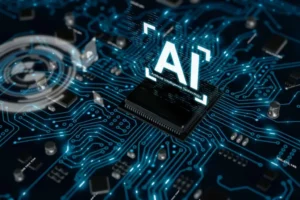RAG vs Fine-Tuning: Choosing the Right Approach

Custom-made LLMs require continuous improvement to produce high-accuracy outputs. When an LLM fails to deliver quality results, one can improve its performance using retrieval augmented generation (RAG) or adjust its functioning by configuring specific parameters. These approaches permit enterprises to tailor AI models to their needs and minimize their expenses. One should discover how to make their smart tools efficient without making a significant investment to achieve sustainability. In this guide, we will compare RAG vs fine-tuning and consider what makes them different.
What is Retrieval-Augmented Generation?
RAG is a GenAI framework built to boost LLMs by permitting them to utilize recent information from reliable knowledge bases. Businesses minimize downtime and save money on pre-training by adopting this strategy. They utilize passive and active RAG methods to make chatbot responses relevant to consumers’ needs.
RAG solutions analyze information stored in internal databases and retrieve it to ensure the accuracy of the outputs they generate. AI bots analyze user prompts and offer fast responses to solve the issues they face.

We are confident that we have what it takes to help you get your platform from the idea throughout design and development phases, all the way to successful deployment in a production environment!
RAG Use Cases
This method is suitable for situations when one needs to provide automated replies, relying on contextual data. LLMs receive direct access to updated datasets. Companies rely on this approach to perform such tasks:
- Provide quick automated replies using chatbots. A digital assistant analyzes info from multiple sources, including technical guides, instructions, manuals, and past conversations. Then, it generates highly personalized replies relevant to a particular context.
- Augment educational experience. Organizations deploy dedicated software to help students get detailed explanations based on professionally written materials.
- Streamline solving legal tasks. Professionals review documents and perform research using LLMs. Algorithms facilitate analyzing contracts, wills, statutes, and other documents.
- Perform medical research. RAG LLMs discover crucial health-related data, analyze clinical guidelines, and consider other information that might have been unavailable in the original dataset. It empowers professionals to diagnose patients quickly.
- Translate content. RAG makes translation professional, enabling LLMs to interpret the meaning in a suitable context.
RAG prompt engineering makes it easier to enhance LLMs’ outputs. As technologies become advanced, enterprises discover new areas where RAG can be applied.
What is Fine-Tuning?
This process involves configuring a previously trained LLM to make it easier to deploy it in a specific industry and handle complex tasks. When algorithmic models are created, they are trained on large datasets. It permits them to master generic language patterns. Many enterprises integrate pre-built LLMs to save money. However, they need to adjust them to solve industry-specific tasks.
Fine-tuning generative AI techniques facilitates retraining models on narrow sets of data to use them for a certain purpose. Here are the two main ways of performing such a procedure:
- Domain adaptation. Firms create domain-specific datasets and optimize LLMs to make their outputs less generic. Models trained on legal documents and literature are better suited for text mining and finding information about precedents and cases relevant to search intent.
- Task adaptation. If a venture has set routines, it can calibrate LLMs on datasets encompassing information about the tasks its employees solve daily. It facilitates translating texts in automated mode, performing sentiment analysis, organizing documents, and generating content.
The approach lets ventures customize LLMs and deploy them to write code, answer client queries, conduct healthcare research, and solve other tasks.
Parameter Efficient Fine-Tuning (PEFT)
Ventures can fine-tune all the parameters of their models or configure only some of them. PEFT facilitates increasing LLMs’ efficiency at a lower cost. The adjustment process requires a significant amount of computing resources. A company should run several GPUs simultaneously and have a lot of free space to store the model. PEFT enables teams to use basic hardware to refine algorithmic tools. It lets them augment a system’s capacity to handle issues. The approach is the best fit for those who want to provide better customer support and analyze sentiment accurately.
Continuous Pretraining
The preliminary training is launched at the beginning of the training stage when an LLM analyzes data from a source dataset, and its weights get initialized in a random order. As systems collect more data, one should feed it to an AI model to make its responses precise. Continuous pretraining enables one to transfer newly discovered information to a trained model. The process deepens an LLM’s expertise in a specific area.

When to Use Fine-Tuning
The strategy is especially useful when one wants to utilize an existing LLM and make its output useful for particular applications. Ventures adopt the approach to achieve the following:
- Generate personalized recommendations. Streaming platforms analyze client behavior and teach LLMs to recommend products that meet a person’s needs perfectly.
- Perform Named-Entity Recognition (NER). Neural networks learn how to recognize specific terminology and produce well-written responses instead of generic replies.
- Analyze consumer sentiment. After retraining, LLMs interpret barely perceivable emotions better. It allows them to detect signs of potential dissatisfaction and offer incentives to improve customer experience (CX).
Companies embrace this approach to enhance the capabilities of their systems and solve complex tasks automatically.
RAG vs Fine-Tuning: How Do They Work?
Fine-tuning is performed when a pre-trained LLM gets exposed to a set of labeled data. It updates its parameters based on the new information. The supervised learning approach means that information in training datasets has already been organized. Before training, a model has a generic understanding. However, when it accesses domain-specific info, its proficiency increases. This approach represents one side of the retrieval augmented generation vs fine-tuning debate, where the focus is on permanently adapting the model’s parameters.
RAG AI systems search through internal data sources to answer queries without mistakes. The retrieval mechanism enables an LLM to generate relevant outputs. When a person sends a query, a system retrieves information from internal knowledge bases and transfers it to the RAG model. Then, an LLM generates a response relevant to the situation.
RAG pipelines rely on semantic search. They utilize vector databases organized by similarity, which allows LLMs to search by meaning. They discover data that meets search intent instead of relying on keywords. Such models require building complex data architecture and conducting regular maintenance. Professionals have to develop data pipelines to ensure their LLMs will have access to recent information.
Which Option to Choose?
Businesses that need to augment their LLMs’ performance use both methods depending on the case. When deciding on which strategy to pursue, consider such things:
- Complexity. It’s easier to implement RAG, as it requires using only coding and architectural skills. Fine-tuning is challenging, as one should specialize in deep learning, LLM configuration, Natural Language Processing (NLP), and running data through algorithms to make it suitable for specific purposes.
- Accuracy. RAG is preferred by those who want to avoid hallucinations and provide well-written replies. However, accuracy depends on a specific domain. Fine-tuning permits teams to enhance LLM’s outputs when solving domain-specific tasks. RAG is less susceptible to biases, as LLMs retrieve information from high-quality sources.
- Type of data. RAG facilitates working with dynamic data, as it enables teams to access recently updated information from internal storage. It makes it unnecessary to retrain LLMs. Fine-tuning improves outputs, but the replies may still be based on static, outdated information.
- Budget. When implementing RAG, one should invest in complex data retrieval systems. Fine-tuning is expensive, as it requires using costly computational resources.
Discovering the differences between these strategies lets ventures choose the best LLM optimization option. Regardless of the approach you decide to set your mind on, you will have to build an enterprise-level algorithmic model for your needs and customize its parameters. It should be capable of integrating data from multiple sources and turning it into relevant prompts to feed into an LLM.
Personalized response generation enables ventures to resolve issues faster, increase client satisfaction, run result-yielding marketing campaigns, detect fraud, recognize behavior patterns, and provide recommendations. After juxtaposing RAG vs fine-tuning, utilize a technique that lets you stay within your budget and achieve your growth objectives. A powerful LLM helps ventures embrace innovation and become sustainable.
Top Articles
Container vs VM (Virtual Machines): How Do They Differ?
I am here to help you!
Explore the possibility to hire a dedicated R&D team that helps your company to scale product development.






